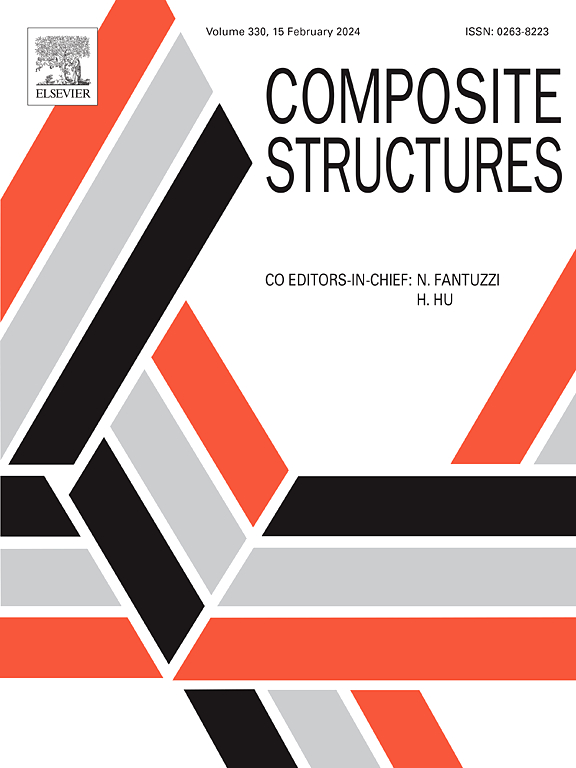低温和高温条件下 CFRP 复合材料层间剪切行为的实验和数值研究
IF 7.1
2区 材料科学
Q1 MATERIALS SCIENCE, COMPOSITES
引用次数: 0
摘要
通过短梁剪切试验,深入研究了碳纤维增强聚合物复合材料在 90 K 至 353 K 不同温度下的层间剪切强度和破坏模式。结果表明,单向层压板的层间剪切强度随着温度从室温降至 90 K 而增加了 67.5%,而交叉层压板和角层压板的层间剪切强度受低温影响不大。为了计算层间剪切强度,我们建立了一个短梁剪切行为数值模型,结果发现与实验数据非常吻合。此外,通过扫描电子显微镜对断裂表面的观察,可以深入了解层压板在微观尺度上的破坏模式。在 90 K 时,单向层压板的分层很明显,向试样边缘延伸。在交叉层压板中,中间平面出现了几条大的贯穿裂缝,试样断裂面上出现了几条小的基体裂缝和空洞。此外,在角材层压板中还观察到分层形成的多条裂缝。本文章由计算机程序翻译,如有差异,请以英文原文为准。
Experimental and numerical investigations of interlaminar shear behaviors of CFRP composites at cryogenic and high temperatures
The interlaminar shear strength and failure modes of carbon fiber reinforced polymer composites at different temperatures ranged from 90 K to 353 K were thoroughly investigated by the short beam shear tests. Considering the three different lay-up configurations, i.e., unidirectional, cross-ply and angle-ply, the results showed that the interlaminar shear strength of the unidirectional laminates increased by 67.5 % with the decrease of temperature from room temperature down to 90 K, while they were insignificantly affected by cryogenic temperature for both the cross-ply and angle-ply laminates. A numerical model of short beam shear behavior was developed to calculate the interlaminar shear strength, and the results were found to be in a good agreement with the experimental data. Furthermore, the observations of fracture surfaces using a scanning electron microscope provided the insights into the failure modes of the laminates at the microscopic scale. At 90 K the delamination in the unidirectional laminates was obvious, extending toward to the edge of the specimen. In the cross-ply laminates, a few large penetrating cracks appeared in the mid-plane, several small matrix cracks and voids were obvious in the fracture surface of the specimen. Additionally, the multiple cracks formed by the delamination were observed in the angle-ply laminates.
求助全文
通过发布文献求助,成功后即可免费获取论文全文。
去求助
来源期刊

Composite Structures
工程技术-材料科学:复合
CiteScore
12.00
自引率
12.70%
发文量
1246
审稿时长
78 days
期刊介绍:
The past few decades have seen outstanding advances in the use of composite materials in structural applications. There can be little doubt that, within engineering circles, composites have revolutionised traditional design concepts and made possible an unparalleled range of new and exciting possibilities as viable materials for construction. Composite Structures, an International Journal, disseminates knowledge between users, manufacturers, designers and researchers involved in structures or structural components manufactured using composite materials.
The journal publishes papers which contribute to knowledge in the use of composite materials in engineering structures. Papers deal with design, research and development studies, experimental investigations, theoretical analysis and fabrication techniques relevant to the application of composites in load-bearing components for assemblies, ranging from individual components such as plates and shells to complete composite structures.
 求助内容:
求助内容: 应助结果提醒方式:
应助结果提醒方式:


